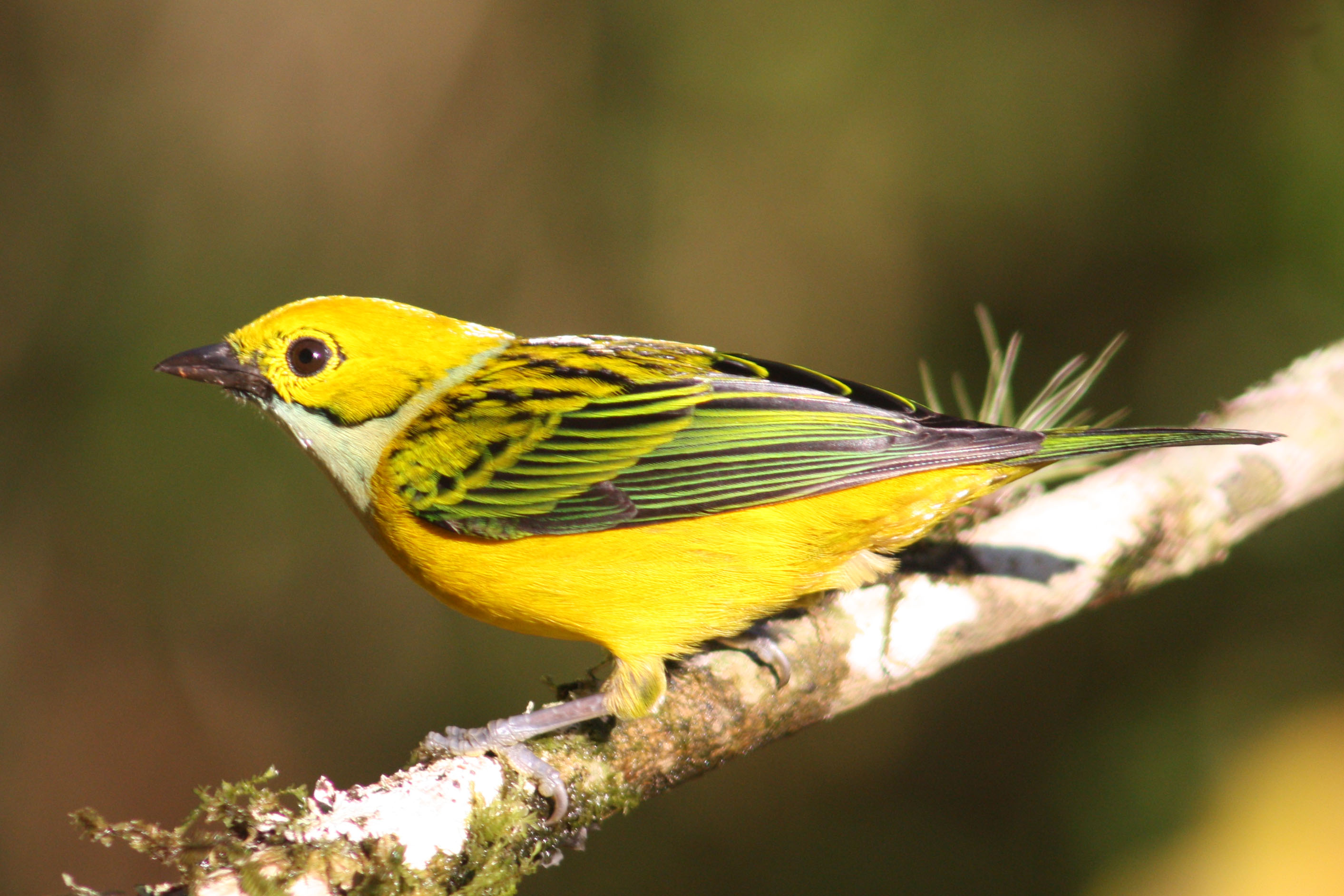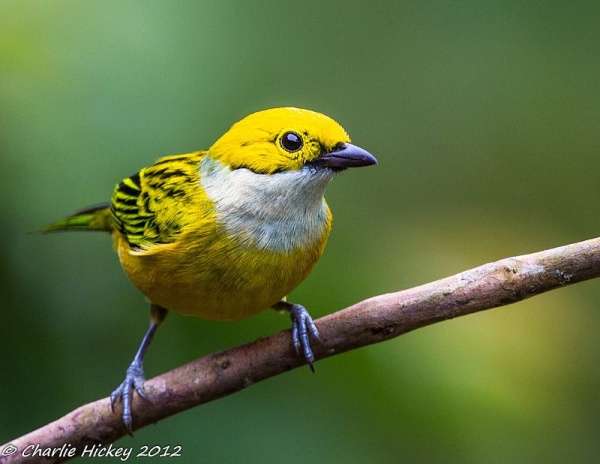
Description: As the name suggests, the Silver-throated tanager is over all bright yellow with a silvery throat patch. The tail and bill are black with a small, black patch at the base of the bill from which a black stripe extends to back ear-coverts. The upperparts have a streaked black pattern. The tail and wings have green edgings. Sexes are similar but females are usually duller.

Size: An average-sized member of this genus, they are approximately five inches (13 cm) in length.

Behavior: They are usually found alone or in pairs, but can be seen in flocks made up of mixed- species when feeding. Appearing somewhat active, moving among the branches as they hunt for food.

Diet: During the non-mating season, they mainly feed on fruit, but also eat flower buds and arthropods. The consumption of arthropods increases during mating season.

Communication: Their call is a sharp buzzy sound that ranges in pitch from flat to high – a “zeeeet” insect-like sound.

Reproduction: Both sexes may gather moss, plant fibers, ferns, leaves and webs for the cup-like nest which is often built on a mossy limb. Two brown- spotted, whitish-gray eggs are laid. The 13 to 14- day incubation period is provided by the female. Afterhatching, both parents feed the nestlings for 15 or more days.

Habitat/range: They are found in cloud, mature and second-growth forests where moss, epiphytes and vines are more readily available from Costa Rica, south along the Andes down to western Ecuador.